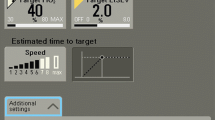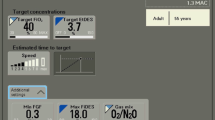Abstract
Automated low flow anesthesia machines report how much inhaled anesthetic agent has been used for each anesthetic. We compared these reported values with the amount of agent that had disappeared by weighing the vaporizer/injectors before and after each anesthetic. The vaporizers/injectors of the Aisys, Zeus and FLOW-i were weighed with a high precision weighing scale before and after anesthesia with either desflurane in O2/air or sevoflurane in O2/N2O. These values were compared with the values reported by the cumulative agent use display tools of the respective anesthesia machines using a linear curve fit. Twenty-five measurements were performed in each group, except for the sevoflurane data with the Aisys that were available from another study (87 pairs). We also determined the amount lost by inserting and removing the vaporizers/injectors or by performing a machine checkout, corrected the measured amounts for these artifacts and repeated the linear fits. The average amount of sevoflurane and desflurane wasted by inserting and removing the cassette for the Aisys, Zeus, and FLOW-i were 0.21, 0.12, and 0.04 mL and 0.12, 0.61, and 1.13 mL liquid agent, respectively. The average amount of sevoflurane and desflurane wasted by the machine checkout with the Aisys, Zeus, and FLOW-i were 1.78, 0.21, and 1.67 mL and 2.39, 0.67, and 4.19 mL, respectively. Performance error of the displayed amount of agent use remained within 10 % of the weighed amount, expect for amounts less than 3 mL sevofurane with the FLOW-i and less than 20 mL desflurane with the Aisys and FLOW-i. Cumulative agent usage displayed by the Aisys, Zeus, and FLOW-i is within 10 % of the measured consumption, except for low consumption cases (<3 mL sevoflurane, <20 mL desflurane). The differences may be due to either measurement error or cumulative agent display error. The current results can help the researchers decide whether the displayed amounts are accurate enough for their study purposes. The extent to which these discrepancies differ between different units of the same machine remains unstudied.


Similar content being viewed by others
References
Biro P, Kneschke O, Theusinger OM (2014) Reliability of the volatile agent consumption display in the Draeger Primus™ anesthesia machine. J Clin Monit Comput 2014.
De Cang M, Hendrickx JFA, De Wolf AM (2014) Sevoflurane usage with different O2/air fresh gas flows during end-expired target control administration with the Aisys. Presented at the Annual ESA 2014 meeting, Stockholm, Sweden ESA 2014, 3AP1-7.
Laster MJ, Fang Z, Eger EI 2nd. Specific gravities of desflurane, enflurane, halothane, isoflurane, and sevoflurane. Anesth Analg. 1994;78:1152–3.
Financial disclosure
The study has not been externally funded. The FLOW-i has been provided under a temporary loan contract. Jan Hendrickx has received lecture support, travel reimbursements, equipment loans, consulting fees and/or meeting organizational support from a number of companies involved with inhaled agent delivery (alphabetically): AbbVie, Acertys, Air Liquide, Allied healthcare, Armstrong Medical, Baxter, Draeger, GE, Hospithera, Heinen und Lowensein, Intersurgical, Maquet, MDMS, MEDEC, Micropore, Molecular, NWS, Philips, Quantum Medical.
Author information
Authors and Affiliations
Corresponding author
Ethics declarations
Conflict of interest
The authors declare that they have no conflict of interest.
Ethical standards
Because the measurement involved only the anesthesia machine itself without affecting patient management in any way, no IRB approval was sought (see Ref. [1]).
Rights and permissions
About this article
Cite this article
Dehouwer, A., Carette, R., De Ridder, S. et al. Accuracy of inhaled agent usage displays of automated target control anesthesia machines. J Clin Monit Comput 30, 539–543 (2016). https://doi.org/10.1007/s10877-015-9746-z
Received:
Accepted:
Published:
Issue Date:
DOI: https://doi.org/10.1007/s10877-015-9746-z




